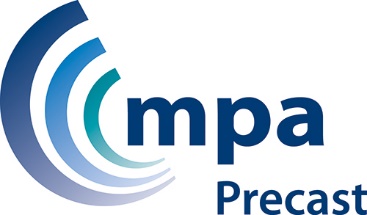Latest News
Precast drainage sector responds to Covid-19
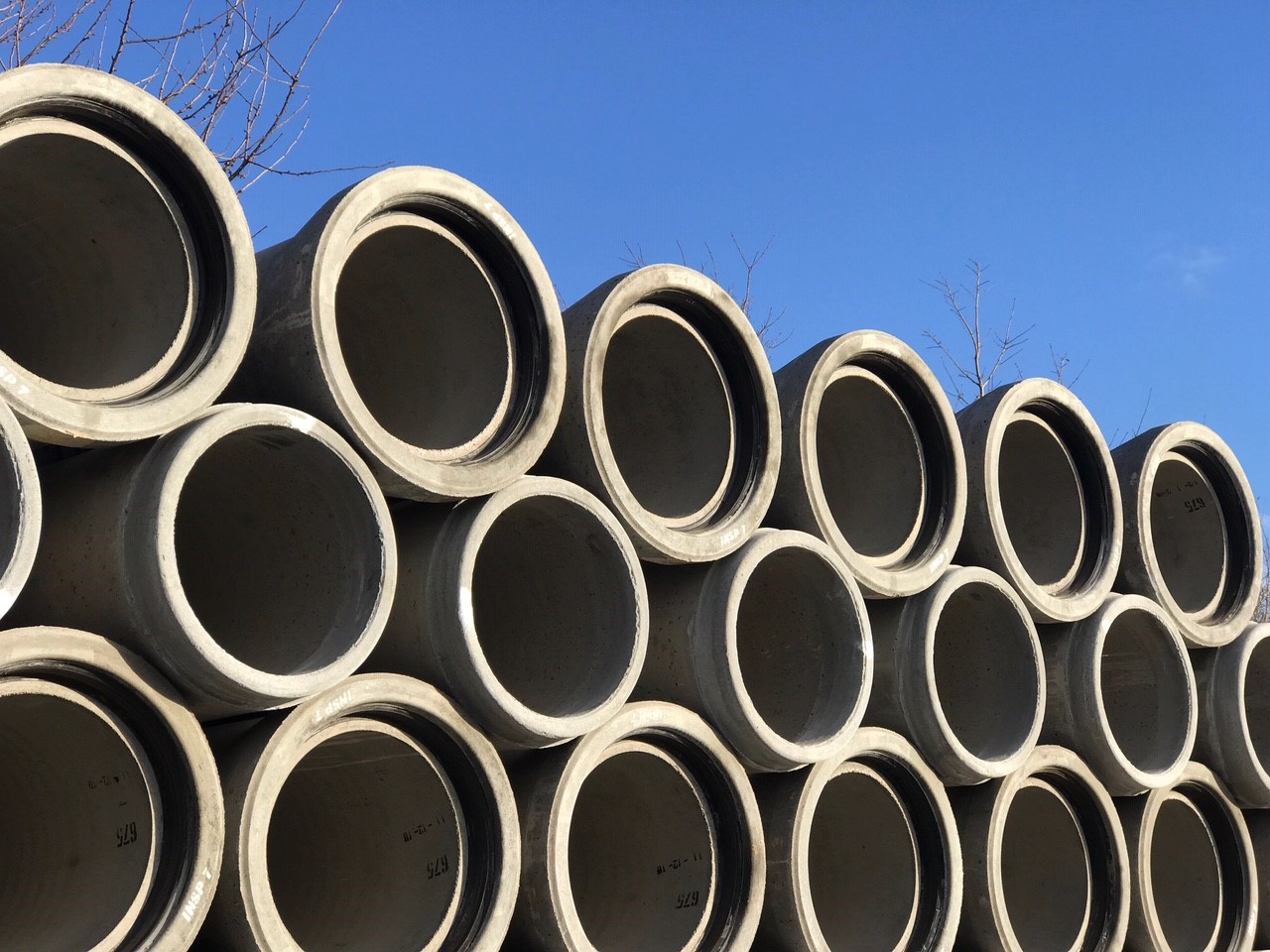
The last three months have been significantly difficult for our families, communities, and country as a whole. Several precast drainage manufacturing sites had to reduce operations and numbers of staff present on-site during the first weeks of this pandemic. All members of the British Precast Drainage Association (BPDA) are following Government advice by implementing social distancing and other precautions on site to mitigate hazards associated with Covid-19. All while maintaining supply of precast concrete products to the market.
As the lockdown eases, and infection rates drop across the country, we are expecting a slow return to normality across the industry and our members are committed to meet that expected market demand while ensuring a safe environment for their members of staff, contractors, hauliers, supply chain partners and neighbouring communities. These are challenging times, and precast drainage manufacturers understand their vital role in supporting a key sector which keeps our drainage and sewerage infrastructure functioning. Precast concrete manufacturers are putting lots of effort into supplying the market and ensuring that our products are manufactured and used safely and responsibly. As further advice from Government becomes available, our members will continue to adjust methods and practices to maintain such standards.
The precast concrete drainage sector remains ready to meet the industry supply requirements of the UK market, as we have been for well over 160 years.
Sewer guidance signals shift on SuDS
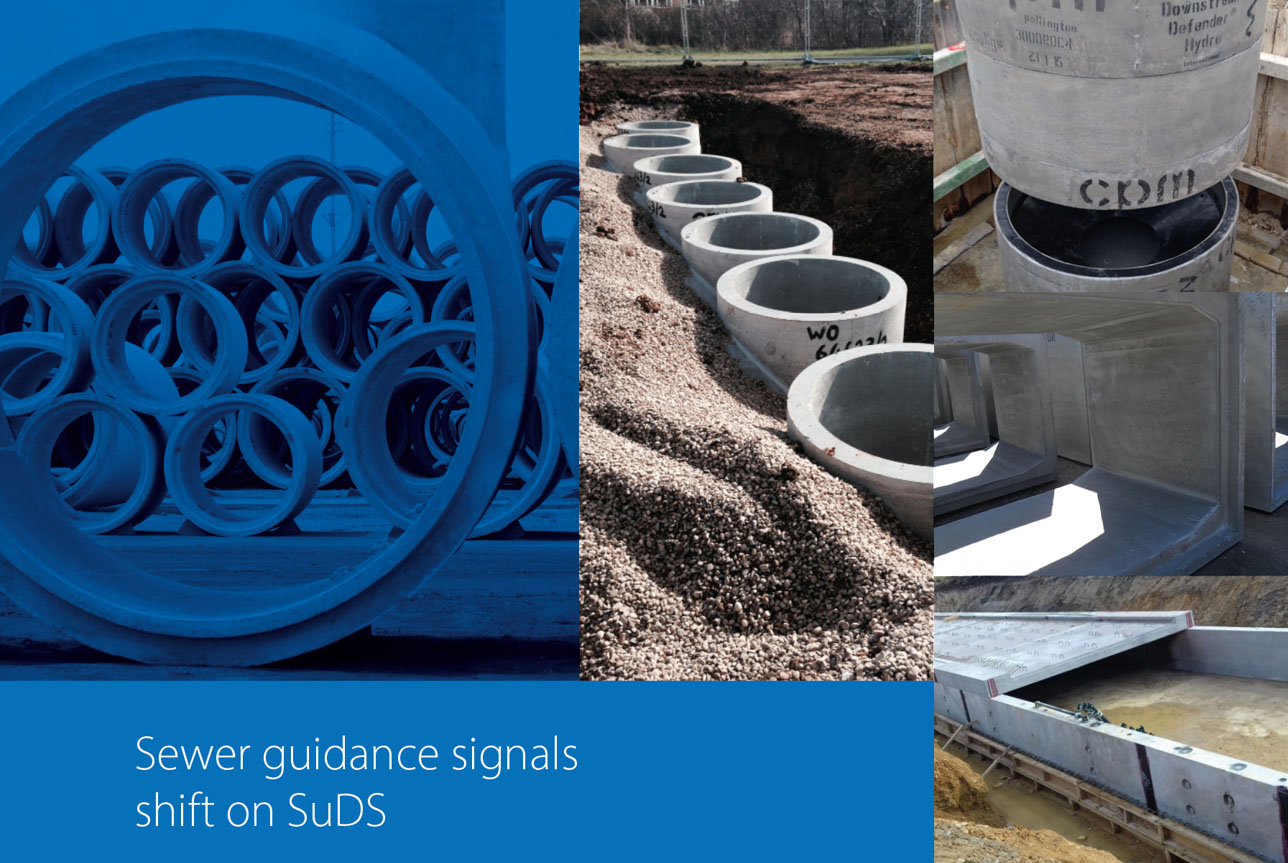
The new code for sewers adoption, which comes into effect in April 2020, includes certain SuDS assets for the first time. British Precast sustainability & product manager Hafiz Elhag explores the implications along with the issues affecting selection of attenuation solutions.
A historic change to the Design & Construction Guidance (DCG) for the adoption of foul and surface water sewers in England comes into force in April 2020. It introduces for the first time a mechanism for water companies to take ownership and responsibility for sustainable drainage systems (SuDS).
Many conventional sewer systems in the UK and other parts of the world are no longer able to cope with increasing volumes of rainfall and increasingly frequent flooding incidents due to climate change. In 2014 SuDS was introduced as one of the main measures to control and mitigate flooding through the government’s National Planning Policy Framework (NPPF).
SuDS offer a range of alternative techniques to conventional piped sewerage in managing stormwater. These methods are designed to be more sympathetic to the natural landscape and conventionally include using ponds, swales, wetlands and natural waterways to control, manage and store surface water runoff.
The new DCG replaces Sewers for Adoption 7 and will offer clearer rules and requirements on where responsibility lies for the long-term maintenance of new SuDS. It is produced by industry trade association Water UK and was approved by Ofwat on 25 October 2019.
Water UK says water companies have taken the initiative on SuDS responsibility in the absence of a governmental plan. This has involved reinterpreting laws on sewers going back to the Victorian era.
The basic criteria that need to be met for a sewer to be “adoptable” can be found in Water UK’s Sewers for Adoption in England report. They include those assets that convey and returns flows to a sewer, surface water body or groundwater and those that have an effective point of discharge into a water body or onto land.
It is also worth noting that attenuation tanks are included in the new guidance for the first time, but underground tanks holding water without discharge will not qualify. Ultimately, it is for the water and sewerage company to apply these criteria to assets that are being offered for adoption.
Not only do SuDS ease pressure on drainage networks, they also improve the urban water cycle by enhancing the quality of surface water. Additional benefits include enhancement of the landscape, the environment, biodiversity and quality of life in urban communities.
Alongside natural sustainable drainage systems, manufactured proprietary technologies can be employed within a sustainable water management train to manage surface water runoff. Like the more natural techniques, manufactured SuDS can be used to intercept, collect, treat or store stormwater and direct them to nearby waterways, depending on specific site requirements.
In heavily built up urban developments, it may not be possible afford land area for natural SuDS solutions such as ponds. For many projects, stormwater attenuation is carried out using proprietary SuDS, most likely an underground tank system comprising a lightweight or precast concrete tank, box culvert, or piping system.
A SuDS survey of engineers, developers and others by the Institution of Civil Engineers and Wavin last year indicated that attenuation was the preferred SuDS solution of 70%aof those responding in England and 63% in Wales. Given that this is the first code that enables the adoption of SuDS, it is worth considering five issues affecting developers’ choice of attenuation solutions.
Top five issues affecting attenuation choice
1.Whole-life cost
As with any other project, the cost of building, running and maintaining a SuDS attenuation solution can be the main factor in determining which system to go for. Residential developments and housing estates in England have a significantly long lifespan.
According to the English Housing Survey (2014-2015), well over 75% of the 23.4 million homes in England are over 40 years old, over 56% are over 55 years old and more than a fifth of occupied houses are over 100 years old. It is therefore reasonable to assume that entire neighbourhoods and housing estates will have a >100 years lifespan.
SuDS will need to meet this life expectancy as they will need to perform effectively over the lifetime of a development. For SuDS not expected to last 100 years or more, the cost of replacement, renovation or major refurbishment will need to be incorporated into the whole-life cost assessment.
Members of BPDA are aware of these expectations and of the need for any underground attenuation solution, such as pipe-based, box culvert based or modular tank systems, to have an expected working life that matches the lifetime of the development - 100 years or more.
2.Space restrictions
Landscape design and site requirements are the main factors determining particular attenuation systems. Ponds are usually preferred by planners, but they take up significant land area which may not be available in heavily built-up areas.
In such cases, underground tank systems may be the only choice and in places where even underground storage space is tight, developers may prefer systems that make the most out of available space underground with the lowest cover depth possible.
3.Construction constraints
Constraints associated with construction can always pose engineering and execution challenges. Unsuitable ground conditions, such as elevated water tables, may make it impossible for some types of lightweight attenuation systems to be used.
The nature of soil can also pose risk for some types of underground attenuation systems, unless they are treated effectively to resist corrosion. The availability of space for lifting and installation machinery can be a challenge, but as all installations require excavators, these same excavators can usually be used in the installation of any engineered storage products requiring mechanical lifting.
Weather can also pose a challenge as some systems cannot be installed with stormwater inside the excavated area due to risk of floatation. Climate change could mean such events occur more frequently. Some engineered systems may also be adversely affected by bursts of bright sunlight and hot weather during installation, due to the high degradation rate of polypropylene components when exposed to UV light.
Manufacturers of precast engineered SuDS have solutions for these challenges that would not affect the effectiveness of the system or lead times.
4.Structural integrity
Developers and adoption authorities need to have confidence in the structural integrity of an engineered attenuation SuDS system. The new DCG code offers detailed guidance on the standards to be used in constructing underground tank systems.
For example, concrete pipelines design will need to comply to BS 9295, British Standards’ guide to the structural design of buried pipelines. Other concrete structures will need to comply to relevant Eurocodes standards.
The adoption of SuDS will face further challenges as new product types, such as geocellular boxes and precast concrete tank systems, are brought under its remit. The absence of an established track record of deployment, along with limited experience of working with certain types of systems, poses a risk that designers may deviate from the established, universally agreed standards.
Where standards like BS 9295 or BS 5911 for concrete pipes and ancillary concrete products or CIRIA’s C737 report - Structural and Geotechnical Design of Modular Geocellular Drainage Systems - are not used, designers need to employ established engineering principles and justify why European and national standards should not apply.
5.Sustainability
SuDS provide a valuable contribution to sustainable development planning and execution, offering an environmentally sensitive approach to stormwater and surface water management. In this capacity, they should also have a lower impact and environmental footprint over their lifetime. This would include lower operational and capital carbon emissions, lower embodied water, transparency and responsible sourcing throughout the supply chain.
There is still a strong need for the sustainable drainage systems industry to improve transparency and provide better quality data so that the benefits of both natural and engineered SuDS become more visible. The differences between engineered SuDS and natural techniques can also be judged sustainably through a complete whole lifecycle assessment approach.
Video makes the case for concrete
The price of the pipes is not the only consideration when costing a drainage installation project, as a video launched by the BPDA explains. Drainage: the compelling case for concrete is a straightforward guide to assessing the whole cost of drainage projects.
Bedding design and infill material are the main variables affecting cost and they differ depending on the types of pipes used in a given project. As the video reveals, the savings go beyond the price of the aggregate itself - less granular bedding means less imported aggregate and less soil taken to landfill, resulting in far fewer lorry movements.
Flexible plastic pipes have very little inherent strength and are usually installed with a full surround of granular material known as Bedding Class S. This transfers the majority of imposed loads, such as those coming from ground-level traffic, into the surrounding bedding.
Pipes made from rigid materials such as precast concrete do not deform, using their inherent strength to withstand loads and stresses. Typically 60-90% of the design strength is built into concrete pipes during manufacture, so bedding classes requiring at least half the quantity of granular material – such as B and N - can be used.
The BPDA drainage video points specifiers to BPDA’s free Concrete Pipe Calculator app, which combines a structural design calculator and material cost calculator and can run whole-cost scenarios for pipes of various materials and dimensions. Visit https://www.precastdrainage.co.uk/calculator-app for more information about the app.
British standard on structural design of buried pipelines revised
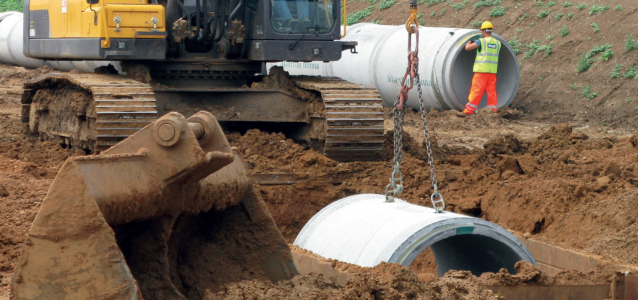
The standard on structural design of buried pipelines, BS 9295, has been revised and is due for publication later this month. BS 9295 used to be a complementary national guidance standard to European standard EN 1295-1. However, in March, most of the main pipeline structural design methodology clauses within the European standard were removed and EN 1295-1 now simply refers to national standards, such as BS 9295, for information on structural design of pipelines. BS 9295 now includes all relevant design information for all types of buried pipelines in the UK, including pipelines made of rigid, semi-flexible and flexible pipes.
The new revision brings structural design methods into line with contemporary design practice, with new traffic loading consistent to Eurocode standard BS EN 1991-2(traffic loads on bridges) and new design methods and formulas introduced for both rigid and flexible pipeline systems (including concrete, clay and plastic sewer pipeline systems). It is expected that all new versions of industry specifications, such as highways England’s HA 40 and Sewers for Adoption, will now refer to the new standard.
UK industry uncovers imports of unverified concrete products, highlighting concerns about the quality and performance of key drainage products
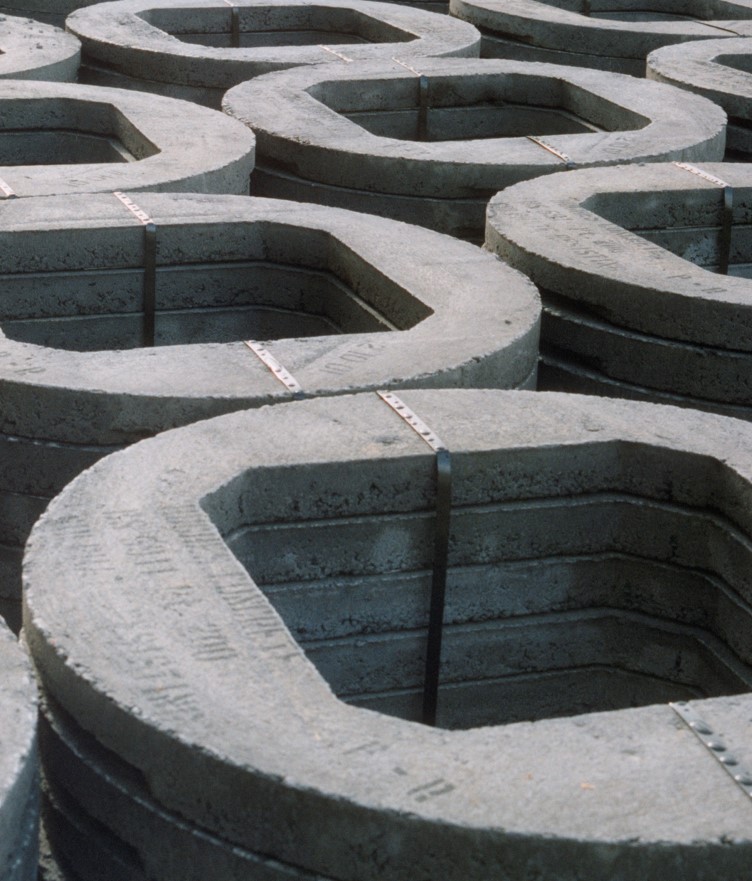
British Precast has discovered that a range of imported precast concrete drainage products such as manhole rings, manhole covers, seating rings, corbels and gully raisers are being placed in the UK market without visible proof of third-party verification or assessment of conformity to relevant European and British standards. As a result, customers can have no confidence in the performance of such products. Third party verification systems are crucial to our industry as they ensure a product's quality, durability and safe performance in service.
A number of UK industry specifications, such as 'Sewers for Adoption', 'Civil Engineering Specification for the Water Industry' (CESWI) and different highways' standards and manuals, require specific precast drainage products to conform to relevant provisions of British Standards such as BS 5911-3. This can only be assured through third-party certification such as BSI's Kitemark scheme. The industry has a responsibility to demonstrate their products to be safe for their intended use.
Colin Nessfield, Technical Manager of British Precast, advised "Customers, and others in the products chain have a responsibility to ensure that the precast drainage products they purchase have the necessary 3rd party assessments and certification, which is the minimum required by the Construction Products Regulation. Ignoring these requirements plays into the narrative that elements of the construction industry are still unconcerned about product safety, quality and client satisfaction."
